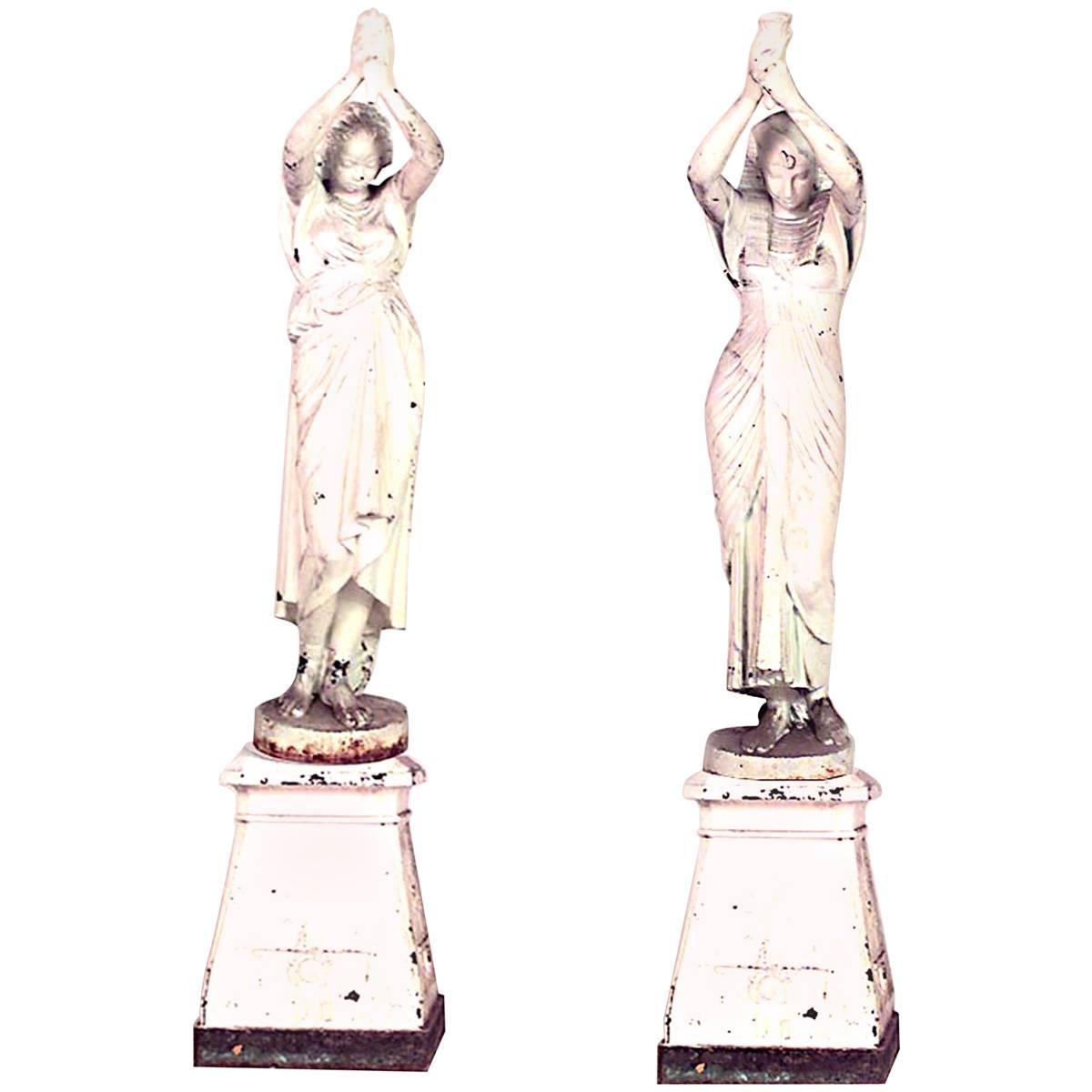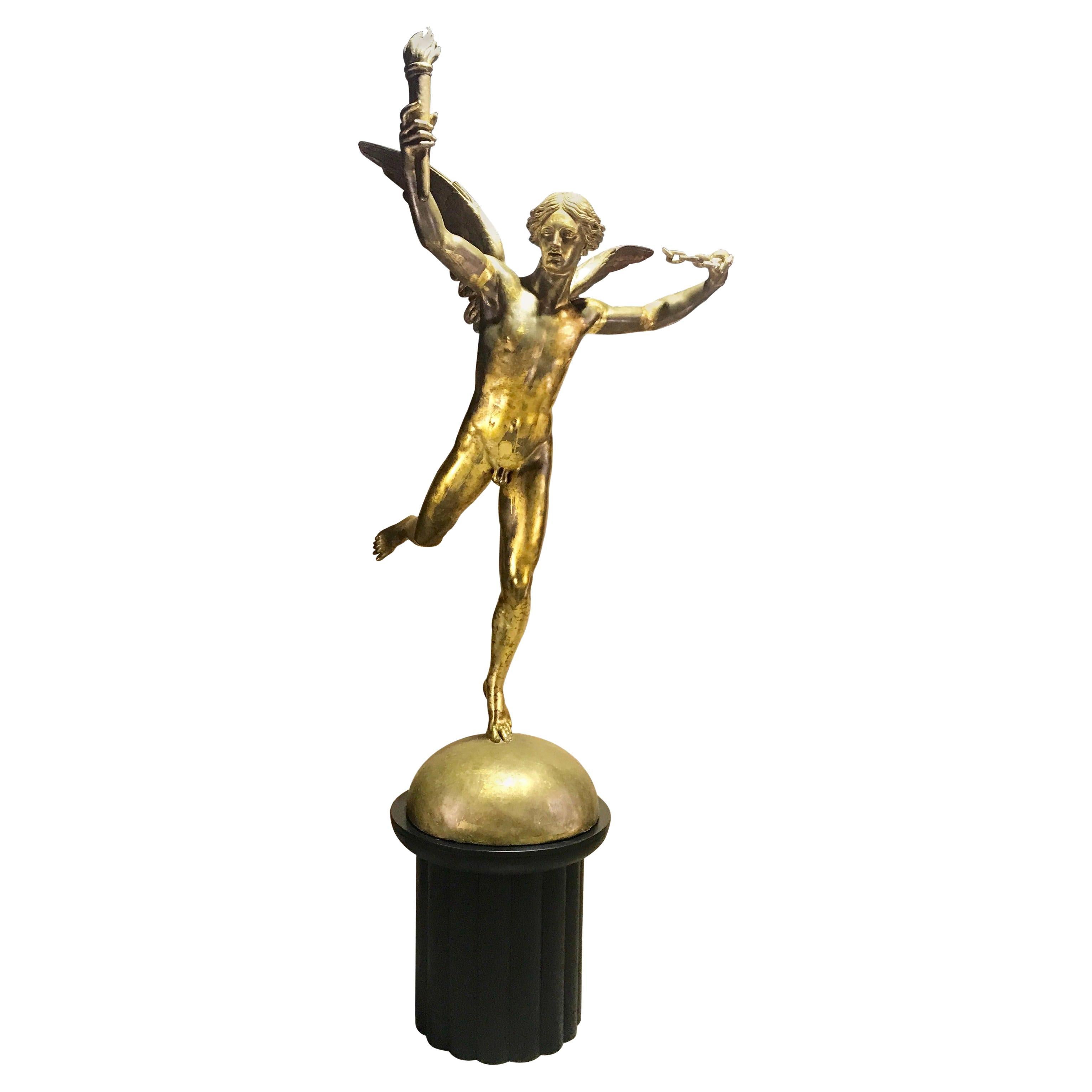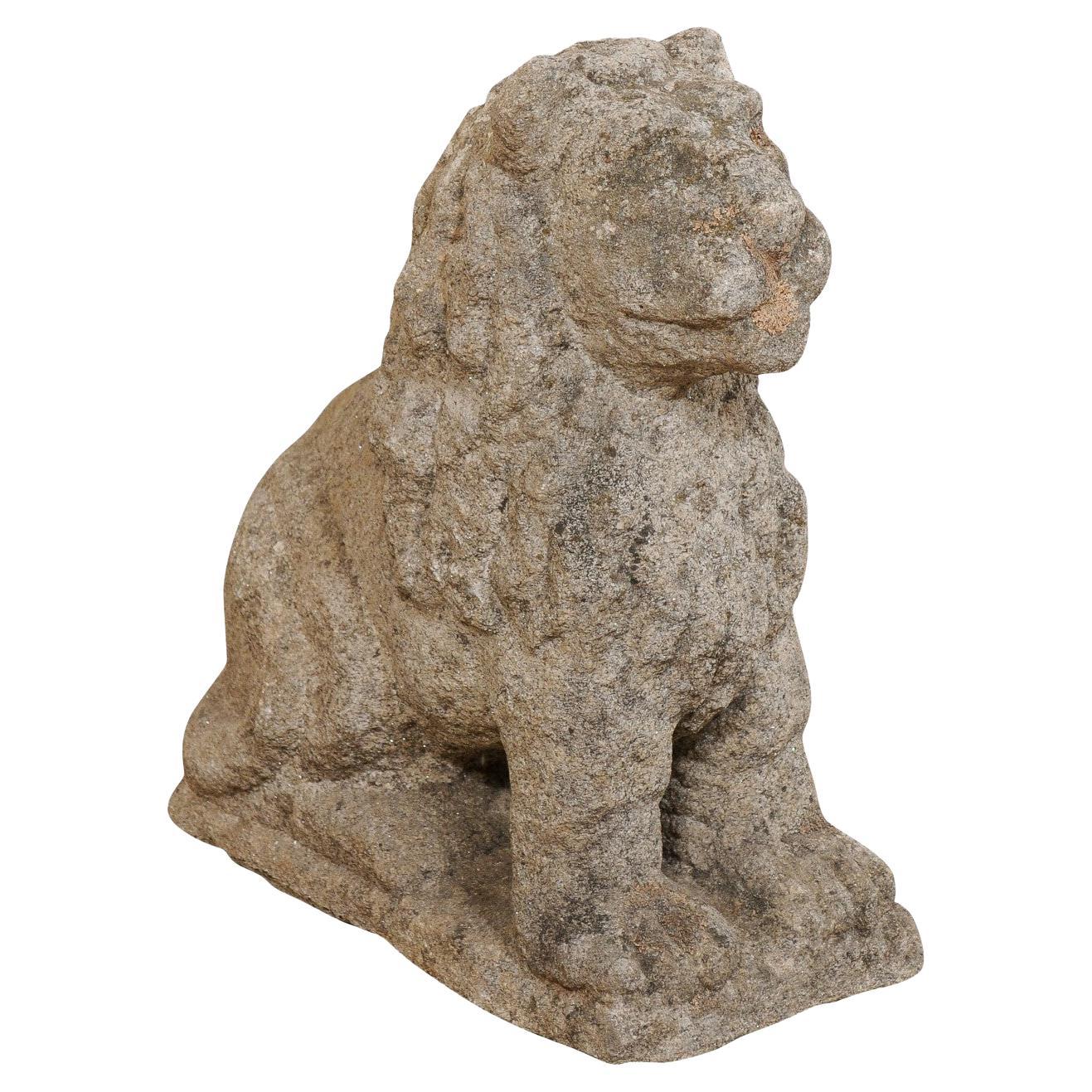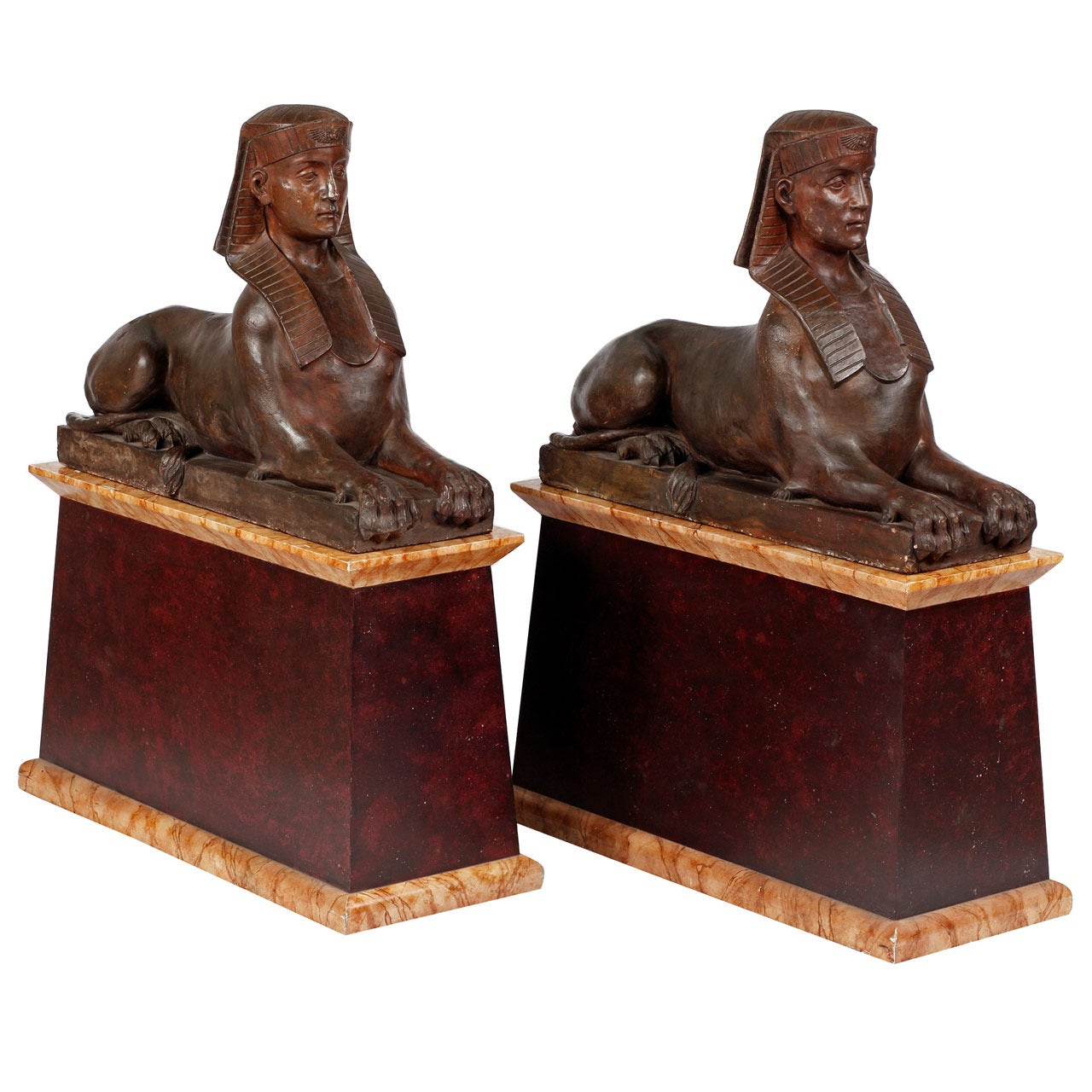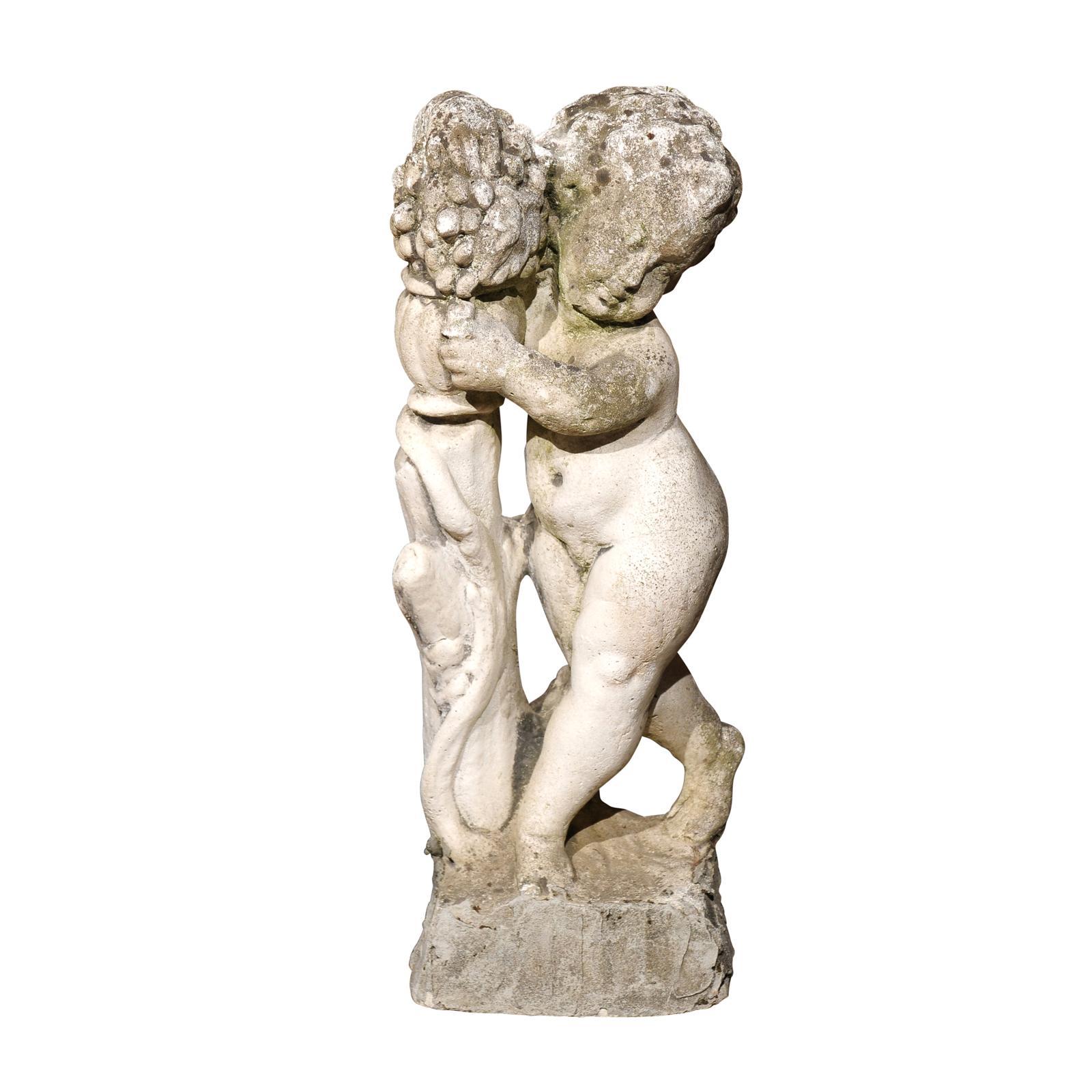Items Similar to Element of an Outdoor Carved Woodwork Showing a Salamander from a Normand House
Want more images or videos?
Request additional images or videos from the seller
1 of 5
Element of an Outdoor Carved Woodwork Showing a Salamander from a Normand House
About the Item
This carved oak woodwork was probably placed on the facade of the house, close to the roofing framework of a Norman house. The sculptor had depicted the salamender frontview in a stylised manner. The scales and the neck fringes are particularly detailed. The head was in the direction of the floor.
According to the popular belief, Salamander was living in the fire, from which the animal found life and protection. It was the symbol of the fire guardians commissioned by God himself. The popular belief, as old as Aristotle writings, also says that the salamender could extinguish fire. Thus we can easily understand why it was chosen to be depicted on the facade of a house.
Moreover, Charles de Valois, duke of Angoulème (d. 1496) used the salamander in fire, as his emblem. His son, François I, king of France, kept this emblem and added NUTRISCO ET EXTINGOmeaning “ I feed and I extinguish’. We can see salamanders depicted on different royal palaces. In the city of Lisieux , we can see the “Salamander Mansion ” from the 16th century, where a carved woodwork Salamander is running on the roofing framework.
- Dimensions:Height: 43.31 in (110 cm)Width: 14.57 in (37 cm)Depth: 4.34 in (11 cm)
- Style:Gothic (Of the Period)
- Materials and Techniques:
- Place of Origin:
- Period:
- Date of Manufacture:Late 15th-Early 16th century
- Condition:Replacements made.
- Seller Location:Saint-Ouen, FR
- Reference Number:1stDibs: LU3115327268072
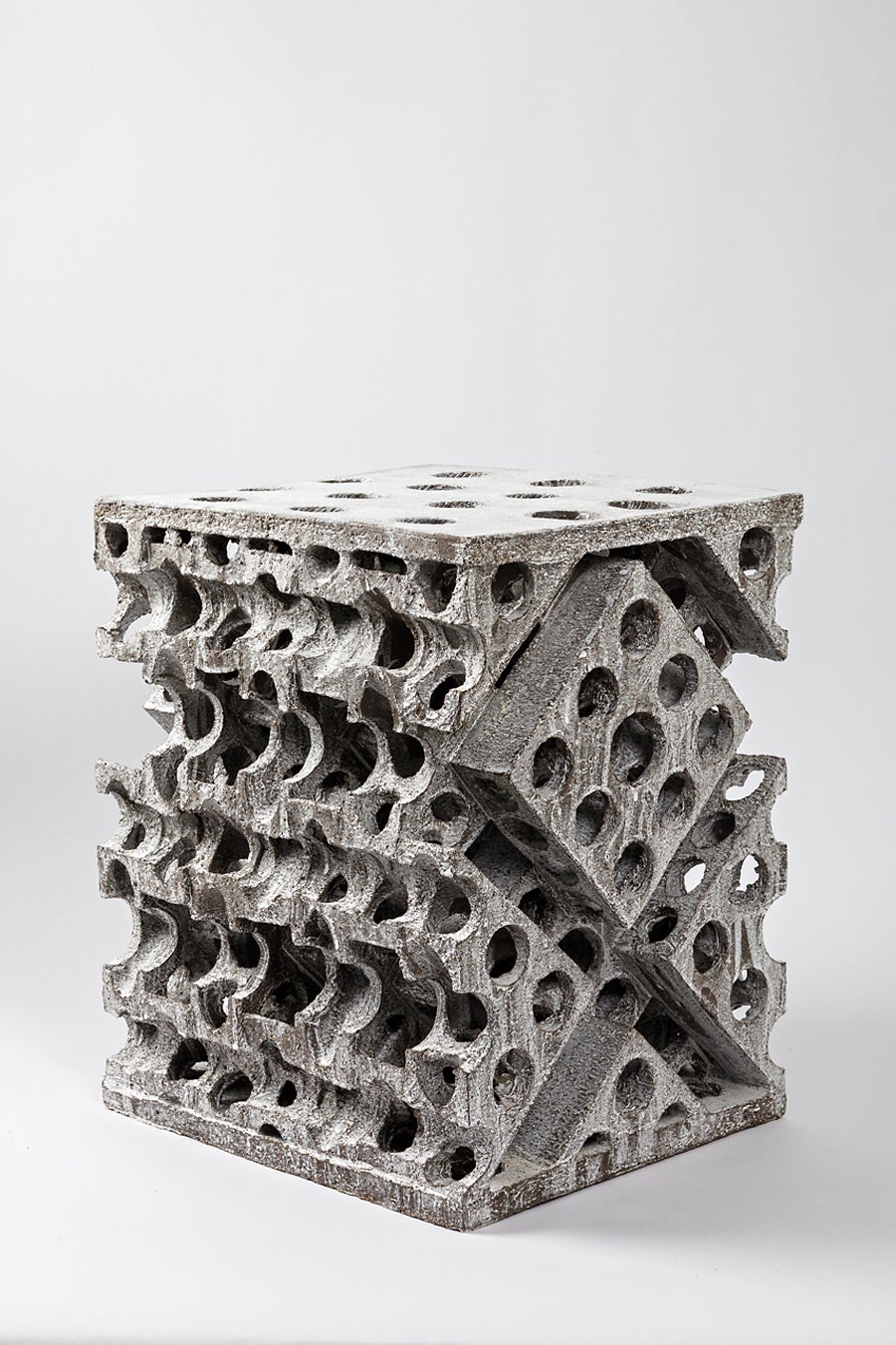
About the Seller
5.0
Vetted Seller
These experienced sellers undergo a comprehensive evaluation by our team of in-house experts.
Established in 2016
1stDibs seller since 2017
153 sales on 1stDibs
Typical response time: 7 hours
- ShippingRetrieving quote...Ships From: Saint-Ouen, France
- Return PolicyThis item cannot be returned.
More From This SellerView All
- 14th Century Sculpture of the Head of an Angel from East of France or RhinelandLocated in Saint-Ouen, FRThis face with prominent eyes, open mouth and beautiful hairs with symetrical undulations may be the face of the Archangel Gabriel.Category
Antique 15th Century and Earlier French Gothic Figurative Sculptures
MaterialsWood
- Carved Amber Figure of ChristLocated in Saint-Ouen, FRThis fine amber sculpture depicting Jesus Christ is a very rare object. Exemples of this sort can only be found in Germanic countries. Already used during Prehistoric times, amber have always fascinated people. Because of the virtues associated with this material amber was carved as amulets and prophylactic ornaments. As an expression of luxury and means amber was also used for adornments and small figures collected by the upper classes. This fossilized resin was picked on the Baltic Sea shores and soon entered a intense trade system. From the 14th century onwards knights of the Teutonic Order...Category
Antique 19th Century German Gothic Figurative Sculptures
MaterialsOther
- Polychrome carved wood Virgin and Child from the 15th CenturyLocated in Saint-Ouen, FRPOLYCHROME CARVED WOOD VIRGIN AND CHILD FROM THE 15TH CENTURY ORIGIN: SOUTH GERMANY, SWABIA, NUREMBERG REGION PERIOD: 15th CENTURY Height: 94,6cm Width : 28 cm Depth : 18 cm Lime wood Original Polychromy Good state of conservation From 1430 onwards, sculpture underwent a profound stylistic renewal which continued until 1530, the so-called late Gothic period. In the Germanic countries, original sculptures flourished in an expressive and sensitive vein. This renewal was inspired by the art of Nicholas of Leiden, who was active in Strasbourg in the 1460's. His style broke with the refined and delicate art of the international Gothic style in force throughout Europe around 1400. The figures became more authentic and realistic. The bodies became denser. Clothes are animated by deep, broken folds, the fabrics are heavy and have a great decorative value. In addition, the polychromy is intended to be illusionistic. The painting makes it possible to restore the texture of the materials, the richness of the textiles and the natural skin tone of the characters. The dissemination of images through engraving and the great mobility of the artists led to the success of this style, which conquered the Upper Rhine, Swabian, Tyrolean and Franconian regions, contributing to the formation of a common stylistic identity in these regions. The economic boom in the flourishing German cities was conducive to the development of original production. Attracted by this prosperity, numerous workshops were set up in order to meet the orders of religious communities, the Church and the laity, including a clientele of middle-class rockers. This precious Virgin and Child is depicted standing on a crescent moon, her head encircled by a crown of tall flowers. Her long wavy hair spreads over her shoulders, framing her beautiful oval face. Under fine eyebrows drawn with a brushstroke, her almond-shaped, slightly drooping eyes look at the Child with infinite softness. She is dressed in a long red dress with a rounded neckline, belted under the chest. The heavy fabric of her dress spreads out in broken folds at her feet. On her shoulders she wears a golden cloak. The drapery has deep folds. She holds out her right hand while she holds the Christ Child with her left. Christ, with his well-defined hair, is naked. His cheeks are highlighted with red, he holds an apple in his left hand and with the other hand makes a sign of blessing towards the faithful. Virgins with Child on a crescent moon were very popular in the second half of the 15th century, especially as the central subject of altarpieces in southern Germany and Austria. The crescent moon on which Mary is standing is reminiscent of the Woman of the Apocalypse. Often equated with the Virgin Mary. This episode is taken from the Book of Revelation (12:1-6) 1 Then a great sign appeared in heaven: a woman clothed with the sun, with the moon under her feet and a crown of twelve stars on her head. ; 2 She was pregnant, and she cried out because she was in labor, in pain from giving birth. ; 3 Then another sign appeared in heaven: it was a great fiery red dragon, with seven heads and ten horns, and seven royal crowns on his heads. ; 4 His tail swept down a third of heaven's stars and threw them to the earth. The dragon stood in front of the woman who was about to give birth so that when she gave birth, he might devour her child. ; 5 She gave birth to a son, a male child who is to rule all the nations with an iron rod. Her child was snatched up to God and his throne. ; 6 Then the woman fled into the desert, where God has prepared a place for her. There she will be taken care of for one thousand two hundred sixty days. Some theologians see in this woman a reference to the Virgin Mary and in the child, Jesus. This remarkable work is a very fine example of sculpture from Swabian workshops in the last decades of the 15th century. It presents all the characteristic stylistic elements: a highly girdled silhouette, an abundant drapery with angular folds, but also a great physical presence accentuated by the polychromy that restores the anatomical details. This group is made of a wooden log. The deep folds of the drapery highlight the movement of the Virgin holding the child. Bibliography : Sophie Guillot de Suduiraut, Dévotion et Séduction, Sculptures souabes des musées de France, vers 1460-1530, Paris musée du Louvre-Éditions somogy, 2015 “Revelation 12 - Common English Bible...Category
Antique 15th Century and Earlier German Gothic Figurative Sculptures
MaterialsWood
- Gothic Virgin and Child from FlandersLocated in Saint-Ouen, FRExhibition Museum Cantini, 1952, The art of the Middle Ages in the Marseille collections, n°101 Provenance Former collection Louis Bresset (before 1952) Former collection Profe...Category
Antique 15th Century and Earlier Dutch Gothic Figurative Sculptures
MaterialsOak
- 15th Century Carved Wood Depicting Saint JamesLocated in Saint-Ouen, FRThe Saint depicted here is Saint James the Great. James is the brother of St. John the Evangelist. Nothing is known of his activities after the Ascension...Category
Antique 15th Century and Earlier French Gothic Figurative Sculptures
MaterialsOak
- 13th Century Virgin and Child from CataloniaLocated in Saint-Ouen, FRSeating on a bench-like throne the Virgin carries her child on her left knee. She bears an important crown high on her head .The Virgin has an ovoid face with bulging eyes, straight long nose and thin lips. The hair parts in the middle and are carved as thick horizontals parallel hair strands...Category
Antique 15th Century and Earlier Spanish Gothic Figurative Sculptures
MaterialsOak
You May Also Like
- Pair of Outdoor Iron Nubian Women StatuariesBy Val D'Osne FoundryLocated in New York, NYPair of Outdoor French Egyptian Revival style cast iron women, each holding a torch aloft and standing on spreading square bases (mid 19th Cent., attr. Val D'Osne)Category
Antique Early 19th Century French Egyptian Revival Statues
MaterialsIron
- Monumental Gold Leaf Sculpture of an AngelLocated in West Palm Beach, FLMonumental gold leaf sculpture of an angel Grand Tour style, made of gold leaf lacquer over fiberglass-reinforced resin The statue measures 94"...Category
20th Century Grand Tour Statues
MaterialsResin, Fiberglass, Wood, Lacquer
- 18th Century Hand-Carved Stone Lion Garden Statue from EuropeLocated in Atlanta, GAA European carved stone lion garden statue from the 18th century. This antique sculpture from Europe has been hand-carved in the image of a m...Category
Antique 18th Century European Statues
MaterialsStone
- An Important Pair of Terracotta Sphinxes by Enrico VellaBy Enrico VellaLocated in Sheffield, MAAn Important Pair of Terracotta Sphinxes On later Sienna and Porphyry Marbleized Plinths Stamped Enrico Vella Italian 19th/20th Century Archi...Category
Antique 19th Century Italian Statues
MaterialsTerracotta
- French Carved Stone Putti Sculpture with Grapes from the Mid 20th CenturyLocated in Atlanta, GAThis delightful French stone statue from the mid 20th century, features a small putto figure leaning against a trunk holding a vase and grapes. Perhaps one of the followers of the go...Category
Mid-20th Century French Mid-Century Modern Statues
MaterialsStone
- Italian Carved Marble Bust of Eros . Circa 1820Located in Hollywood, SCItalian hand carved marble bust of Eros with cloak & quivers. Eros signifies the god of love. Early 19th CenturyCategory
Antique 1820s Italian Classical Roman Busts
MaterialsMarble
